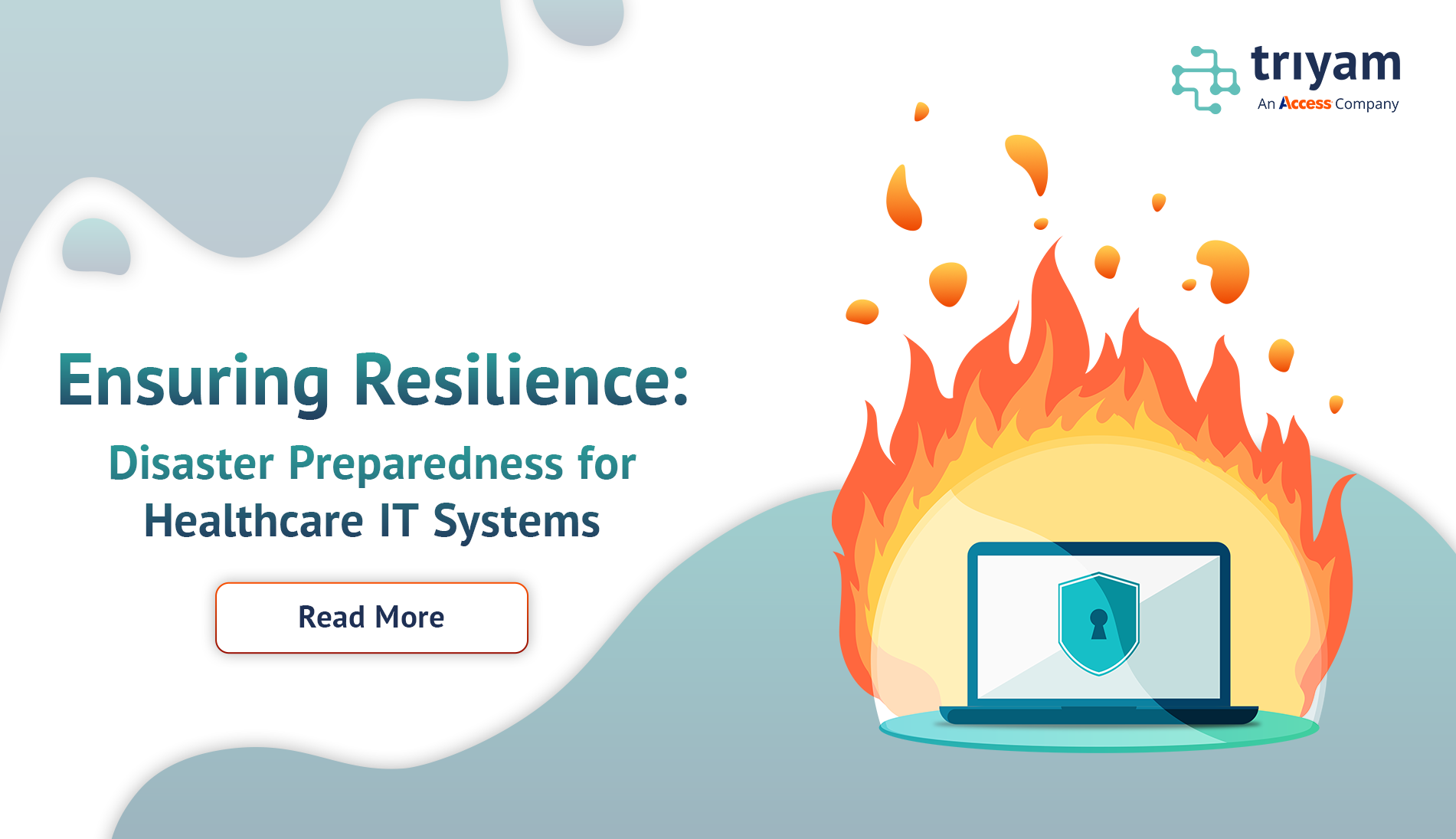In the ever-shifting terrain of healthcare technology, embracing disaster preparedness isn’t merely a precautionary measure, but an indispensable imperative. From cyberattacks and data breaches to natural disasters. It’s essential for healthcare IT systems to be prepared to provide uninterrupted service and care to their patients. In today’s blog, we’ll explore why disaster preparedness matters. We will outline the key steps that healthcare organizations. We will outline the key steps that healthcare organizations take to protect their IT infrastructure in the event of a disaster.
What Are the Healthcare IT Systems Risks?
Healthcare IT disasters can come in many forms, each presenting its own unique set of challenges and threats:
Ransomware and data breaches pose a risk of compromising patient confidentiality and disrupting critical operations. Natural disasters such as hurricanes, earthquakes or floods can cause physical infrastructure damage, resulting in system downtime and loss of data. System failures or human error can also lead to service interruptions, compromising data integrity. Understanding the risks is the first step toward developing a robust disaster preparedness strategy.
Revealing the specifics of a recent attack on Change Healthcare by the BlackCat/ALPHV group in February, Andrew Witty, CEO of UnitedHealth Group. Elucidated how compromised credentials were utilized to gain remote access to a Citrix portal, enabling lateral movement within systems and eventual data exfiltration, followed by ransomware deployment. Witty’s testimony underscores the vulnerability of even adept businesses to security breaches due to lapses in enforcement of security protocols by personnel. It highlights the global nature of cyber threats and the imperative for stringent security measures across organizations.
Importance of Preparedness:
Failing to be prepared for disasters in healthcare IT can have serious consequences for patient safety, financial performance, and compliance with regulations. Downtime in EHR systems can disrupt clinical operations, prevent patients from accessing their records, and delay the delivery of care, potentially compromising patient outcomes. Data breaches can damage an organization’s reputation and lead to significant financial penalties and legal consequences. By being prepared for disasters early, healthcare organizations can reduce downtime, reduce risks, and maintain continuity of care.
Critical Measures for Healthcare IT Systems Disaster Preparedness
Risk Assessment: To adequately prepare for a disaster, it is important to conduct a thorough risk assessment to identify any potential threats, weaknesses, and critical assets in your IT infrastructure. This will help you determine the probability and impact of different disaster scenarios so that you can focus your mitigation efforts on those that are most likely to occur.
Contingency plan: This plan should outline the procedures for responding to, recovering from, and maintaining business continuity in the event of a disaster. It should also include the roles and responsibilities of key personnel, communication protocols, and backup facilities or centers to ensure smooth operations during an emergency.
Data backup and Recovery: Make sure your data and applications are secure by using reliable backup and recovery solutions. Backup your electronic health records (EHRs), patient information, and other important systems regularly to keep them safe offsite or on a cloud platform. Test your data restoration procedures regularly to guarantee the integrity and availability of data.
Cybersecurity: Protect your organization from cyber threats by strengthening your cybersecurity defenses. Put in place multiple layers of security controls, such as firewalls and intrusion detection systems, as well as antivirus software. Additionally, educate your staff on the best cybersecurity practices, such as using strong passwords, being aware of phishing threats, and encrypting their devices, to reduce the chances of human error.
Check out our latest article on how to be cybersmart!
Training and Drills: Provide regular training and drills to ensure staff is well-equipped to respond to a disaster. Simulate different disaster scenarios to evaluate preparedness, identify areas of improvement, and improve response strategies.
Collaboration and Partnerships: Develop relationships with local communities, emergency response organizations, and industry partners to ensure disaster response efforts are coordinated. Participate in community disaster preparedness events and networks to increase resilience and response capability.
Conclusion:
Embracing a culture of disaster preparedness isn’t just forward-thinking; it’s essential in today’s dynamic healthcare environment. Disaster preparedness involves recognizing risks, devising contingency strategies, and enforcing robust mitigation measures to bolster the resilience and dependability of your healthcare IT systems should a crisis strike unexpectedly. Through proactive readiness, you safeguard patient data, uphold service continuity, and uphold your dedication to delivering quality care.
Looking for a holistic solution that prioritizes Disaster Recovery and Preparedness? Reach out to Triyam, your go-to provider for all your healthcare IT needs.
Schedule a live demo now!
Explore further the rationale behind the necessity for healthcare data to be hosted in the cloud.

